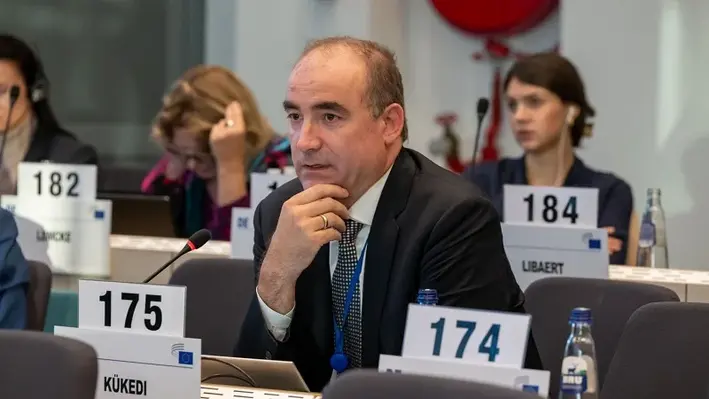

At the October plenary session of the European Economic and Social Committee (EESC), the significant untapped potential of geothermal energy in Europe was explored with members emphasising the resource as an essential part in the forthcoming energy transition.
Members Zsolt Kükedi, and Thomas Kattnig led these discussions, underlining how the low-emissions resource could help the EU reduce its dependence on fossil fuels and support decarbonisation.
“Geothermal energy can make a useful contribution to achieving the EU’s 2050 climate neutrality goals,” said remarked Kükedi.
“Its potential is unexploited and the European Commission should move immediately to put together a comprehensive strategy to make use of the resources it provides,” added Kattnig.
While the potential is near limitless, the committee was quick to point out that investment in geothermal power plants will not work without financial help at national level. Specifically, government funding and incentives will be required in order to attract and de-risk initial investments. Moreover, changes in energy policy or financing can affect the attractiveness of geothermal projects.
To bring geothermal projects online, therefore, the committee stated that the risks need to be accurately identified and that this process should be carried out with local communities with a view to increasing public acceptance.
The statement from the committee concluded by noting that currently geothermal energy is still not very developed across Europe, and its real potential remains unassessed due to insufficient geothermal resource mapping. However, as explored by the International Renewable Energy Agency, geothermal energy, as a long-lasting and cost-effective source of renewable energy, has the potential to stabilise electricity grids and partly offset risks connected to the fast deployment of variable renewables.
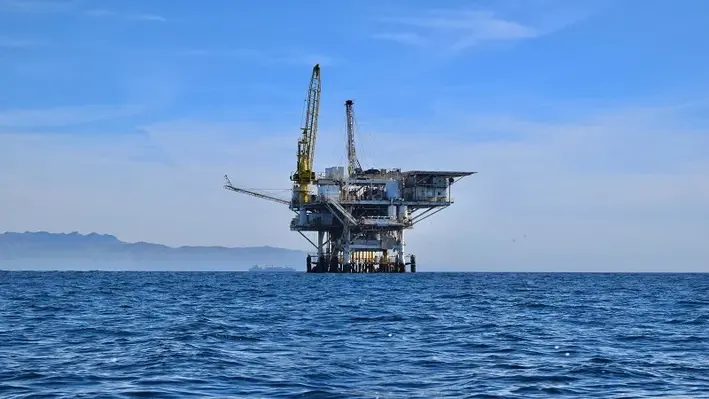

Ahead of the publication of its 2024 Decommissioning Insight, Offshore Energies UK (OEUK) has stated that operators need to plug 200 abandoned North Sea oil and gas wells a year in order to stay on top of targets.
This will be among the findings of the new report which seeks to detail the challenge facing the region’s energy industry. Multiple changes to the tax regime are causing continuing economic and fiscal uncertainly which has damaged activity levels. These goalposts are set to remain on the move following the Chancellors Autumn statement later this month.
Despite these setbacks, OEUK has said that the report will also showcase the expertise and capabilities of the UK decommissioning industry which is helping to turn this challenge into a more manageable task.
It will reportedly outline that stable government policy can help support the decommissioning industry in the UK and prevent multi-million pound contracts go elsewhere. A successful approach here could secure the future of thousands of skilled UK jobs for decades to come.
OEUK decommissioning manager Ricky Thomson said: “Operators must continue to sanction projects and the supply chain must remain resilient and competitive. The energy transition has decommissioning at its heart and sharing cross-sector information and expertise is crucial. I have no doubt we can make this happen.”
The report will be released at OEUK’s 2024 Decommissioning Conference in St Andrews, Scotland from 18-20 November.


Ashtead Technology, a provider of subsea technology and services, has signed an agreement to acquire Seascan Limited and its subsidiaries (known as Seatronics), as well as its sister company J2 Subsea Limited, international subsea electronics and ROV tooling rental and services businesses, from Acteon Group.
The UK£63mn acquisition – which remains subject to closing conditions – represents the company’s ninth in seven years. By bringing Seatronics and J2 onboard, Ashtead Technology is aiming to expand its capabilities within the global survey & robotics rental market. Together, the two entities have operations in Singapore, UK, US and UAE, from which they provide subsea electronics and tooling products and services to the offshore energy market. This includes supporting the installation, inspection, maintenance & repair, and decommissioning of subsea oil & gas infrastructure, as well as renewable counterparts.
Brice Bouffard, Chief Executive Officer of Acteon, commented, “Upon closing, this transaction will be the next important step in focusing our service portfolio to achieve Acteon’s long-term strategic goals. Seatronics and J2 have been an integral part of our business for many years and I’m very pleased to see both teams moving together to such a dynamic new home at Ashtead Technology.
“Acteon is committed to optimising our portfolio to better serve our customers and stakeholders as we support the evolving offshore energy market.”
In acquiring the two companies Ashtead has gained access to a highly-skilled employee base of 110 and has added more than 7,000 proprietary assets, thus increasing its rental portfolio by 30%.
“Seatronics and J2 are businesses we have known for a long time,” remarked Allan Pirie, Chief Executive Officer of Ashtead Technology. “With our most recent acquisitions focussing on expanding our mechanical services capability, this latest acquisition strengthens our international footprint and capability within our survey & robotics market. We look forward to welcoming new colleagues to Ashtead Technology and increasing the wealth of in-house expertise as a larger Group, creating a world leading subsea survey and robotics team.”


BiSN, a global provider of wel-lok sealing solutions, has achieved a remarkable milestone having reached 500 commercials deployments of its bismuth-based sealing technology.
The technology has now been deployed in more than 20 countries across the world, including in each of the major energy-producing regions having ticked off sites in North America, South America, UK & Europe, Africa, the Middle East, Asia, and Australia.
This new achievement comes off the back of another record setting period for the company, taking less than a year to achieve the last 100 deployments.
“With another year-on-year record of deployments, major operators around the globe are realising how effective wel-lok technology is for applications throughout the life cycle of a well, in addition to new industries,” remarked Paul Carragher, Founder and CEO of BiSN. “This year we have seen the first deployments in gas storage and carbon capture projects signalling new areas of growth and interest in our technology.”
According to the company, its commercial success has been significantly aided by its efforts to expand across the globe. Such an initiative has seen it open new facilities in Australia and Brazil in the last 12 months, which now work in tandem with the existing sites in Norway and Scotland.
Arild Stein, Senior Vice President of Research and Development, explained, “It is critical for BiSN to be where our clients are. The expansion strategy allows for the development of successful and lasting partnerships with operators, and to expand into new industries where our engineered sealing technology can be transformative.”
Despite the success, BiSN has made it clear that it has no intention to rest on its laurels but continues to refine and develop its wel-lok technology. Well suied for well intervention completion and P&A applications, the company is also targeting more use in additional activities such as around gas storage, hydrogen and carbon capture.
“Bismuth as a sealing material is particularly suited for the highly corrosive environment in CCS and gas storage projects,” surmised Stein “Bismuth alloy is impermeable and non-corrosive. We are very excited for this new growth area for BiSN and how it will enable the success of large-scale storage projects.”

 Island Drilling Company has announced the successful completion of its recent contract with Tullow Oil.
Island Drilling Company has announced the successful completion of its recent contract with Tullow Oil.
The operations, conducted in Mauritania over a period of three months, were carried out in water depths ranging from 208 meters to 1200 meters using dynamic positioning (DP) alone.
Throughout the project, all health, safety, and environmental (HSE) standards, and key performance indicators (KPIs) were achieved. The plug and abandonment (P&A) operations were completed within the planned timeframe and under budget, reflecting the efficiency and effectiveness of the collaboration.
The feat was achieved through the company's 'one team' approach by excellent cooperation between its offshore and onshore segments.
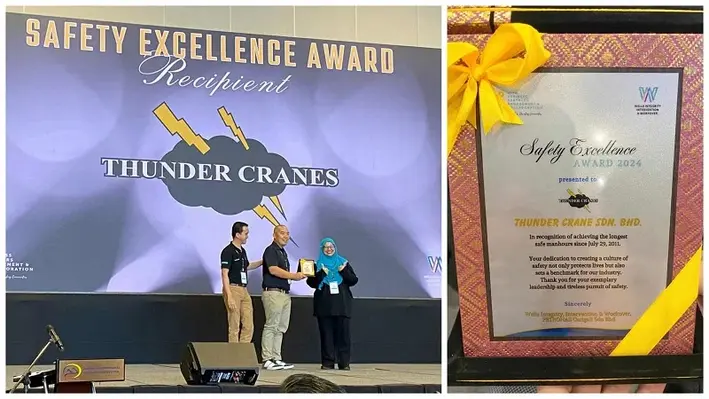

Thunder Cranes, a provider of portable-modular cranes and specialised lifting solutions for the offshore oil and gas industry, has been awarded the Safety Excellence Award by Petronas Carigali Sdn Bhd (PCSB).
The accolade pays tribute to the work Thunder Cranes has undertaken with PCSB since 2011, recognising its outstanding commitment to safety. This is proven by the fact it has achieved the longest safe manhours in operating with PCSB’s well integrity, intervention and workover department over the past 13 years.
In receiving the award, PCSB management thanks Thunder Cranes for its dedication to creating a culture of safety that “not only protects lives but also sets a benchmark for our industry.”
Across all of its offshore operations in Malaysia with PCSB, Thunder Cranes has accumulated 1.69mn LTI-free manhours over 4,759 days of operations since 2011.
Thunder Cranes has certainly been making waves in recent months, having just proven its worth in a Gulf of Thailand decommissioning project. Discover the full story by clicking here.


The OWI Global Awards is returning on 14 November to gather the offshore community for a celebration as the very best in global well intervention excellence are recognised for their outstanding contribution to the industry.
Sponsored by Welltec, the 2024 edition will be held at Union Kirk in Aberdeen, Scotland, with 11 winners picked out from a wide roster of exceptional entrees. Tickets are available now and can be acquired by clicking here.
Those in attendance will have the opportunity to network with peers from the offshore community and will share in the celebration of the 2024 champions selected from the categories of:
•Best Project Outcome: Organisations that have completed an industry leading project;
•Best Example of Collaboration: Two or more organisations that have collaborated to achieve ground-breaking outcomes;
•Best Example of Digital Innovation: Trailblazers in digitising processes or solutions;
•Best Example of Downhole Innovation: Organisations with excellent well intervention technology at a subsurface level;
•Best Example of Well Integrity Innovation: Organisations with an exceptional well integrity solution or service;
•Best Example of P&A Innovation: Organisations that have a solution, technology or completed a project which signifies the best in P&A;
•Best Example of Subsea Intervention: Organisations with first-class well intervention operations in waters over 1,000+ feet deep;
•Best Example of Platform Intervention: Organisations with an outstanding project on the well head;
•Energy Transition Pioneer of the Year: Organisations spearheading the transition to greener energy through the services and tooling they offer;
•Intervention Champion of the Year: Organisations that are market leaders in the well service industry;
•Jørgen Hallundbæk Lifetime Achievement Award: An individual who has made an exceptional contribution to the well intervention community throughout their career.
With a plethora of submissions being received, the daunting task of determining the finalists from the talented entry pool and, ultimately, selecting the category winners was given to an experienced panel of judges. Industry experts from ADNOC, EGPC, ENI, Petronas and more acted as arbitrators, independently assessing and scoring each entry to determine which submissions had gone the extra mile. As such, the official 2024 finalists who are in with a chance of claiming a trophy in Aberdeen are:

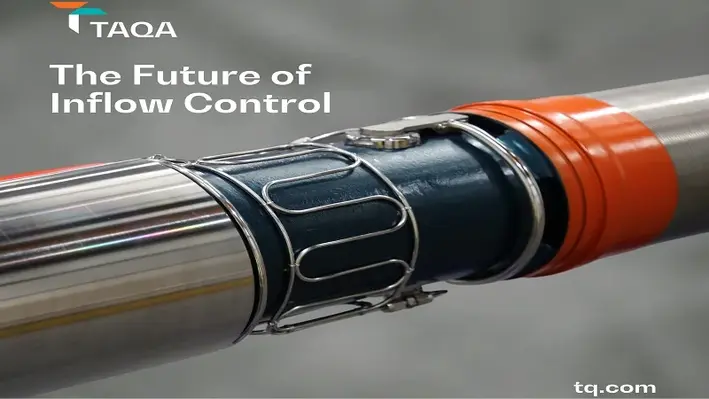

TAQA, an international company offering leading well solutions for the energy industry, has revealed the next-generation inflow control system.
The M4 Inflow Control System dictates the flow of undesired fluid (such as water and gas) and avoids any binary (open/close) effect that can result in instability or even stop production. Enabling operators to optimise their reservoir performance while sustainability managing fluid production, the new system excels in controlling water in ultra-light and light applications and enhances gas production control, providing stability and flexibility in diverse reservoir conditions.
“With the largest portfolio of inflow control systems more than 20 years of inflow control devices expertise, the M4 Inflow Control System represents the pinnacle of our innovation so far,” remarked Mojtaba Moradi, subsurface engineering manager of TAQA. “This new generation offers water control by gradually reducing inflow as water production increases, avoiding premature well shut in.
“Its main benefit is precision control based on reservoir production. The device allows operators to maximise output without risking shutting wells in, so they can manage production continuously and efficiently, which translates into obvious financial benefits.”
According to TAQA, the M4 Inflow Control System technology incorporates an advanced pilot control system that is super sensitive to density, making it suitable for a wide range of oil types, including ultra-light, light, medium, and heavy oils. It also features advanced multi-phase control, allowing the device to perform independently of its orientation in the wellbore.
TAQA also offers a ‘plug and play’ integration with its full portfolio of inflow systems and has been built to optimise performance in all types of wells in all reservoir types. Additional operational features such as last-minute capacity change, and the ability to circulate to the bottom have also been incorporated into the design.
Although not limited to any oil viscosity, so far, the system has demonstrated excellent performance with oil viscosities as low as 0.5cP tested together with water to define the operating and control points at various water cuts. A full qualification matrix of debris, erosion and cycle testing has also been completed.

 With a commitment to recycling the Northern Endeavour floating production storage and offtake (FPSO) vessel in a safe and environmentally sound manner while achieving value for money, the Australian Government has released a request for tender (RFT) to find a supplier to recycle the vessel.
With a commitment to recycling the Northern Endeavour floating production storage and offtake (FPSO) vessel in a safe and environmentally sound manner while achieving value for money, the Australian Government has released a request for tender (RFT) to find a supplier to recycle the vessel.
As works are underway to prepare the FPSO for a safe disconnection from the subsea infrastructure, the Government is seeking proposals from organisations to recycle the FPSO and manage the disposal of hazardous waste. This also includes the recycling of any furniture, fixtures, equipment, victuals or other on-board items. The FPSO will be towed to the ship recycling facility of the successful tenderer.
All FPSO recycling activities must comply with relevant regulatory requirements. This includes relevant safety, environmental protection and maritime regulations across international conventions and agreements, domestic legislation and regulations, and state legislation and regulations.
Interested parties must ensure registration to submit proposals through the AusTender website only. All requirements must be addressed in the RFT documents which are accessible on AusTender.
The Department of Industry, Science and Resources is holding industry briefing sessions for interested parties. There will be three separate briefings focussing on the commercial, financial and technical aspects of the RFT. To register for the briefings, participants can email the contact officer at
Submissions of the RFTs will close on 29 November 2024.

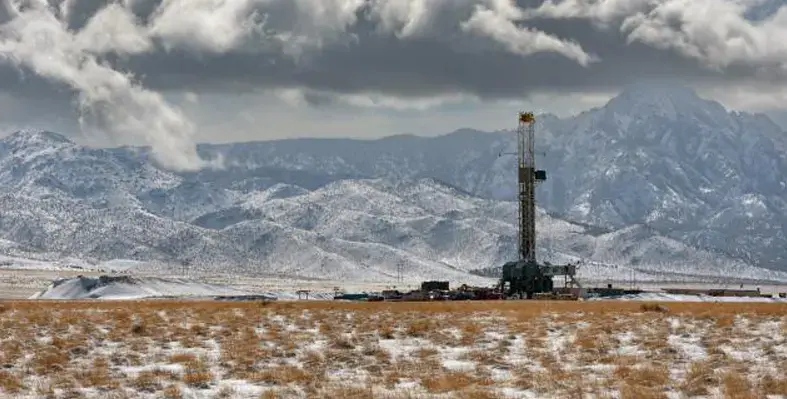 The Department of the Interior has announced the Bureau of Land Management's approval of the Fervo Cape Geothermal Power Project in Beaver County, Utah.
The Department of the Interior has announced the Bureau of Land Management's approval of the Fervo Cape Geothermal Power Project in Beaver County, Utah.
The project will use innovative technology to generate up to 2GW of baseload power that, if fully developed, is enough to supply more than two million homes. This approval marks the BLM's green-light for nearly 32GW of clean energy projects on public lands, including 42 projects approved under the Biden-Harris administration. The BLM is also proposing a new categorical exclusion to facilitate geothermal energy resources confirmation on public lands.
“Geothermal energy is one of our greatest untapped clean energy resources on public lands,” said Principal Deputy Assistant Secretary for Land and Minerals Management, Steve Feldgus. “Today’s actions are part of the Department’s work to deliver on new opportunities, new technologies, and new solutions in geothermal energy that support the Biden-Harris administration’s commitment to create jobs, economic growth, and clean carbon-free electricity for communities throughout the West.”
“The BLM is committed to supporting the responsible growth of geothermal energy on public lands,” said BLM Director Tracy Stone-Manning. “We need all the tools in the toolbox to reach a clean energy future, and this proposed categorical exclusion will be helpful in accelerating the process of locating new geothermal resources.”
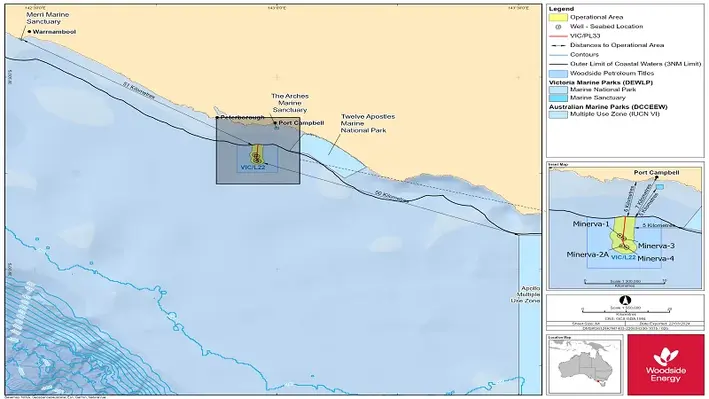

The National Offshore Petroleum Safety and Environmental Management Authority (NOPSEMA), the Australian Government’s offshore energy regulator responsible for health and safety, well integrity and environmental management for offshore oil and gas, has accepted Woodside Energy’s plans to decommission the Minerva Field.
The field, previously operated by BHP Petroleum, is located in Commonwealth waters with the wells laying approximately 11 km southwest of Port Campbell in water depths of approximately 50-60 m. Woodside plans to remove all subsea infrastructure and equipment from the seabed associated with the Minerva development. According to NOPSEMA, activities covered by the decommissioning include:
• Ongoing field management activities (inspection and monitoring) for the Minerva subsea and well infrastructure until decommissioning;
• Removal of the Minerva gas pipeline bundle in Commonwealth waters. The pipeline comprises of approximately 4.9 km of 10-inch concrete coated rigid-steel flowline, bunded with an electro hydraulic umbilical and two 2-inch steel chemical injection lines and stabilisation materials;
• Removal of Minerva subsea infrastructure within VIC-L22 in Commonwealth Waters comprising of five inline pipeline structures, five tie-in spools, and associated equipment and stabilisation material.
Equipment removal activities are planned to commence as early as Q4 2024 and require approximately three to five months, subject to vessel availability and weather constraints.
The plans for the decommissioning were submitted to NOPSEMA earlier this year. Click here to learn more.
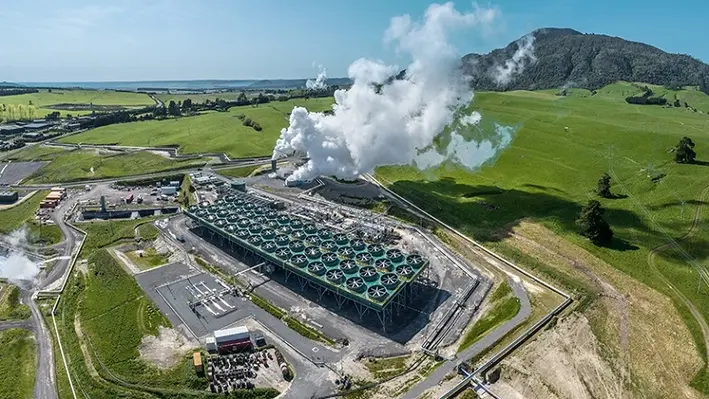
 New Zealand-based Contact Energy has reached a major commissioning milestone with its new Te Huka 3 geothermal power station as it has synchronised and provided power to the national grid for the first time.
New Zealand-based Contact Energy has reached a major commissioning milestone with its new Te Huka 3 geothermal power station as it has synchronised and provided power to the national grid for the first time.
At full capacity the power station will run at 51.4MW which equates to enough renewable energy to power the equivalent of 60,000 homes. During a three week testing period with Transpower, approximately 15MW will initially be fed into the grid before gradually increasing.
This period will be followed by formal generator compliance testing to Transpower’s system operator code requirements to confirm Te Huka 3 can provide electricity to the grid efficiently and safely.
Contact’s CEO Mike Fuge said “This marks a huge moment for the team at Te Huka 3, who have, for the past two years, worked tirelessly from the initial ground-breaking on site to building a fully operational renewable power station.
“[Te Huka 3] is a significant demonstration of our ability to invest, build and deliver world class assets for the benefit of all New Zealand.”
Once Transpower’s tests are completed, Contact will carry out further performance and reliability testing before the site is expected to become fully operational by the end of the year. One of the tests will include a 30-day reliability run to confirm that Te Huka 3 can run continuously and reliably at 51.4MW over a month-long period.
Fuge continued, “It is a really exciting time for geothermal energy. It has often been the unsung hero of power, but now it is really coming into its own as it plays a crucial role in New Zealand’s transition away from fossil fuels while helping to keep the lights on.”
Page 42 of 111